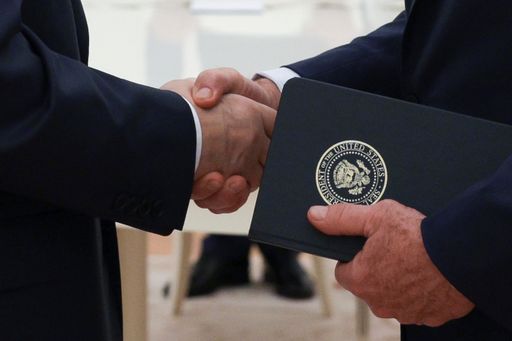On Friday the 15th, US President Donald Trump will sit down with his Russian counterpart Vladimir Putin in Anchorage, Alaska, to discuss the potential ending to the war in Ukraine more than three-and-a-half years after Moscow launched what it describes as a “special military operation”.
The choice of the summit venue is deliberate and laden with symbolism.
Alaska – remote from European capitals yet steeped in Cold War lore – was once Russian America before being sold to the US in 1867 by a debt-strapped czar.
Putin’s is the first visit by a Kremlin leader to the icy land, which remains a reminder of an era when Russia ceded territory peacefully to a rising America. Today, though, the roles have inverted, as Russia’s President seeks to annex land from its neighbour.
President Trump is potentially positioned to broker that transfer.
For Ukraine, the symbolism is grim. A place where Russia once relinquished land without bloodshed – as to demonstrate that borders can change, land can be bought and sold – will now host talks that could ratify an annexation achieved through force.
Adding to the affront, Ukraine will not be represented at the table, despite earlier suggestions that President Volodymyr Zelenskyy might attend.
The Kremlin has long resisted any direct meeting between Putin and Zelenskyy until a final agreement is ready for signature – a position that frustrates Kiev and dismays European capitals.
Excluding Kiev from talks about its own borders not only offends basic notions of sovereignty but also undermines the legitimacy of any eventual settlement and lasting peace in Europe.
History, too, offers costly lessons. For example, in 1938, Britain, France, Italy and Germany ceded Czechoslovakia’s borderlands to Hitler without Prague’s consent, hastening the march to World War II.
Political symbolism
Both Trump and Putin enter the high-stakes Anchorage talks in need of a political win.
For Trump, the summit is an opportunity to show that he can achieve progress where others have stalled, delivering on his second-term pledge to act as the world’s foremost “peacemaker and unifier”.
But that ambition cannot come at the expense of principle.
The lure of a deal for its own sake – especially one built on misplaced faith in Putin’s willingness to compromise – risks producing a settlement that unravels as quickly as it is announced.
A meeting with Russia’s leader on American soil could indeed burnish Trump’s image as a statesman, but only if he resists Moscow’s gambits and uses the occasion to exert pressure on the Kremlin.
Putin, for his part, is under pressure to justify to his electorate and to Russia’s elites a war that has cost the country lives, resources and its international standing.
If he can persuade Washington to formally recognise Moscow’s annexation of Ukrainian territory and to accept strict, lasting limits on Ukraine’s security – barring NATO membership and restricting the bloc’s forces on its soil and Western military support – the balance of the summit would tilt decisively in his favour.
But such an outcome would mean undermining Ukraine’s sovereignty, weakening Europe’s security for decades, and rewarding the use of force to redraw borders.
A deal concluded over Ukraine’s head would not only diminish the legitimacy of any settlement, but would also send a dangerous signal to other powers that territorial conquest can be legitimised if the right mediator can be found, with implications from Eastern Europe to Taiwan.
On the upside, President Trump has taken steps to draw in European counterparts and Ukraine into his deliberations.
In a German-hosted virtual session on August 13, Trump convened with European leaders and Zelenskyy, reinforcing that any further negotiations over Ukraine must include Kiev’s voice.
Future talks could also build on the revived transatlantic security momentum facilitated by June’s NATO summit in The Hague, which produced a bold agreement to raise European defence spending targets to five percent of GDP.
The endgame?
Ultimately, the Alaska talks will be less a stage for dramatic breakthroughs than a test of whether the West can hold its ground.
The greater danger lies in the slow bleed – incremental concessions, dressed up as pragmatic compromises – that chip away at Ukraine’s negotiating leverage and fracture allied unity.

Every indication that Washington might acquiesce to Russian territorial gains without Kiev’s assent will be seen as a win for Moscow, unsettling America’s allies in Europe and Asia, who see their own security bound up in the principle that borders cannot be redrawn by force.
Preserving that principle requires that any settlement come with real security guarantees for Ukraine – with NATO membership – as the surest deterrent to renewed aggression.
It also means holding firm against formal recognition of Russian annexations without Ukraine’s agreement, a stance rooted in decades of US diplomatic practice and vindicated by history.
Without such discipline, the Alaska meeting risks becoming not a step towards stability but a milestone in the gradual normalisation of territorial conquest.



















